
Genealogy Online For Dummies, 7th Edition
Published by: John Wiley & Sons, Inc., 111 River Street, Hoboken, NJ 07030-5774, www.wiley.com
Copyright 2014 by John Wiley & Sons, Inc., Hoboken, New Jersey
Published simultaneously in Canada
No part of this publication may be reproduced, stored in a retrieval system or transmitted in any form or by any means, electronic, mechanical, photocopying, recording, scanning or otherwise, except as permitted under Sections 107 or 108 of the 1976 United States Copyright Act, without the prior written permission of the Publisher. Requests to the Publisher for permission should be addressed to the Permissions Department, John Wiley & Sons, Inc., 111 River Street, Hoboken, NJ 07030, (201) 748-6011, fax (201) 748-6008, or online at http://www.wiley.com/go/permissions .
Trademarks: Wiley, For Dummies, the Dummies Man logo, Dummies.com, Making Everything Easier, and related trade dress are trademarks or registered trademarks of John Wiley & Sons, Inc. and may not be used without written permission. All other trademarks are the property of their respective owners. John Wiley & Sons, Inc. is not associated with any product or vendor mentioned in this book.
LIMIT OF LIABILITY/DISCLAIMER OF WARRANTY: THE PUBLISHER AND THE AUTHOR MAKE NO REPRESENTATIONS OR WARRANTIES WITH RESPECT TO THE ACCURACY OR COMPLETENESS OF THE CONTENTS OF THIS WORK AND SPECIFICALLY DISCLAIM ALL WARRANTIES, INCLUDING WITHOUT LIMITATION WARRANTIES OF FITNESS FOR A PARTICULAR PURPOSE. NO WARRANTY MAY BE CREATED OR EXTENDED BY SALES OR PROMOTIONAL MATERIALS. THE ADVICE AND STRATEGIES CONTAINED HEREIN MAY NOT BE SUITABLE FOR EVERY SITUATION. THIS WORK IS SOLD WITH THE UNDERSTANDING THAT THE PUBLISHER IS NOT ENGAGED IN RENDERING LEGAL, ACCOUNTING, OR OTHER PROFESSIONAL SERVICES. IF PROFESSIONAL ASSISTANCE IS REQUIRED, THE SERVICES OF A COMPETENT PROFESSIONAL PERSON SHOULD BE SOUGHT. NEITHER THE PUBLISHER NOR THE AUTHOR SHALL BE LIABLE FOR DAMAGES ARISING HEREFROM. THE FACT THAT AN ORGANIZATION OR WEBSITE IS REFERRED TO IN THIS WORK AS A CITATION AND/OR A POTENTIAL SOURCE OF FURTHER INFORMATION DOES NOT MEAN THAT THE AUTHOR OR THE PUBLISHER ENDORSES THE INFORMATION THE ORGANIZATION OR WEBSITE MAY PROVIDE OR RECOMMENDATIONS IT MAY MAKE. FURTHER, READERS SHOULD BE AWARE THAT INTERNET WEBSITES LISTED IN THIS WORK MAY HAVE CHANGED OR DISAPPEARED BETWEEN WHEN THIS WORK WAS WRITTEN AND WHEN IT IS READ.
For general information on our other products and services, please contact our Customer Care Department within the U.S. at 877-762-2974, outside the U.S. at 317-572-3993, or fax 317-572-4002. For technical support, please visit www.wiley.com/techsupport .
Wiley publishes in a variety of print and electronic formats and by print-on-demand. Some material included with standard print versions of this book may not be included in e-books or in print-on-demand. If this book refers to media such as a CD or DVD that is not included in the version you purchased, you may download this material at http://booksupport.wiley.com . For more information about Wiley products, visit www.wiley.com .
Library of Congress Control Number: 2013954204
ISBN 978-1-118-80810-8 (pbk); ISBN 978-1-118-80816-0 (ebk); ISBN 978-1-118-80818-4 (ebk)
Manufactured in the United States of America
10 9 8 7 6 5 4 3 2 1
Chapter 1
Beginning Your Ancestral Journey
In This Chapter
 Starting research with yourself
Starting research with yourself
 Getting familiar with a genealogical database
Getting familiar with a genealogical database
 Creating an online family tree
Creating an online family tree
 Entering data with an app
Entering data with an app
W e know you're ready to go! You have a mouse in hand and are set to learn all there is to know about your ancestors. However, we need to go over a few useful things before that mouse runs wild.
If you're new to genealogy, we strongly suggest that you begin your journey with this chapter. (That's why we made it Chapter .) We'll walk you through the basics of recording genealogical data by starting with a very familiar person you! Then we'll explore how to get valuable information from relatives, locate key documents around the house, how to use photographs to further your research, and explore easy ways to get organized.
Sketching Yourself
Late one night, you decide to start looking for information on your great-great-grandfather Absalom Looney. After booting up your computer and connecting to the Internet, you put good old Absalom's name into your favorite search engine. Within a couple of seconds, a page appears telling you there are more than 51,000 results for Absalom Looney. How can you possibly sift through all the Absaloms onscreen and find the one you're looking for? Well, before you go any further, we should let you in on a little secret: Instead of starting your journey with Absalom, it's better to begin with the information you have about someone you know better yourself.
Regardless of what your spouse thinks, we're convinced that you're really the expert on you. You know your birth date, place of birth, parents names, and where you've lived. (We recognize that not everyone knows all this information; adoptions or other circumstances may require you to do the best you can with what you know until you can discover additional information about yourself.) Knowing some things about yourself, it's time to start sketching out your life and, at the same time, learning some good research skills that will help you delve into the lives of others.
When working on your life's sketch, we recommend beginning with current events and working back through your life. This is the method you'll likely use when researching an ancestor. First, note the basics: your current marital or family status, occupation, residence, and activities. Then move back to your last residence, occupation, and so on until you arrive at your birth date. Make sure that you include milestones such as children's birth dates, marriage dates, military service dates, educational experience, religious affiliations, participation in organizations and sports, and other significant events in your life. If you prefer, you can cover your life by beginning with your birth and working forward to the present. Either way is fine, as long as you list all the important events.
You have several ways to store your sketch. Some people prefer to start with index cards, placing a particular event on each card or, if you want to use a digital tool, you can store notes in a product such as Evernote ( www.evernote.com ) or Microsoft's OneNote ( office.microsoft.com/en-us/onenote ). Others use a database or word processor to write up things that they recall over a certain period of time. If you don't have time to type something out, why not use a digital voice recorder to record all those nuggets of information? Using any of these methods, you can begin to arrange historical events to form the basis of your biographical sketch.
 The biographical sketch that you create now may become an important research tool for one of your descendants who decides to conduct research about you in the future. So, when you have the time, turn that sketch into a full-blown autobiography. This way, your descendants not only know the facts about your life, but also gain some insight as to why you chose the paths you did throughout your life.
The biographical sketch that you create now may become an important research tool for one of your descendants who decides to conduct research about you in the future. So, when you have the time, turn that sketch into a full-blown autobiography. This way, your descendants not only know the facts about your life, but also gain some insight as to why you chose the paths you did throughout your life.
Next page


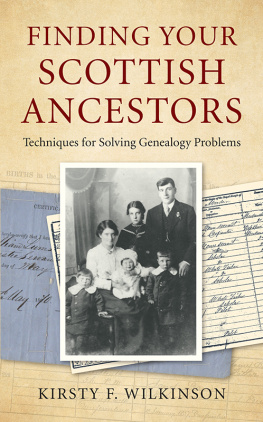
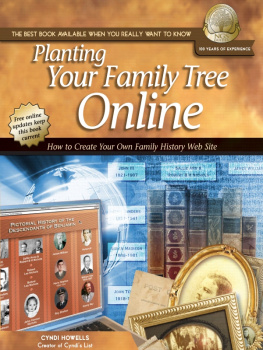
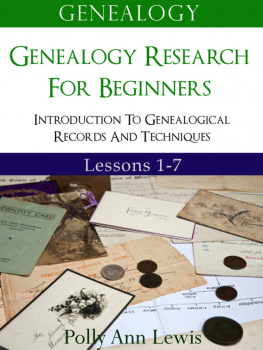

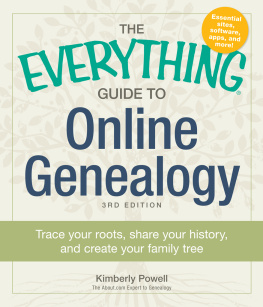
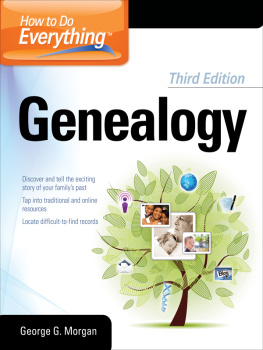
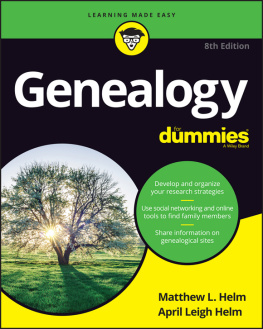


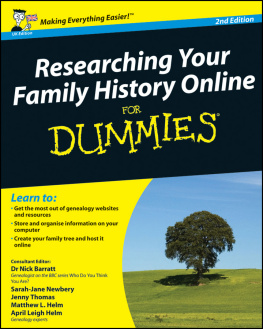

 Starting research with yourself
Starting research with yourself The biographical sketch that you create now may become an important research tool for one of your descendants who decides to conduct research about you in the future. So, when you have the time, turn that sketch into a full-blown autobiography. This way, your descendants not only know the facts about your life, but also gain some insight as to why you chose the paths you did throughout your life.
The biographical sketch that you create now may become an important research tool for one of your descendants who decides to conduct research about you in the future. So, when you have the time, turn that sketch into a full-blown autobiography. This way, your descendants not only know the facts about your life, but also gain some insight as to why you chose the paths you did throughout your life.